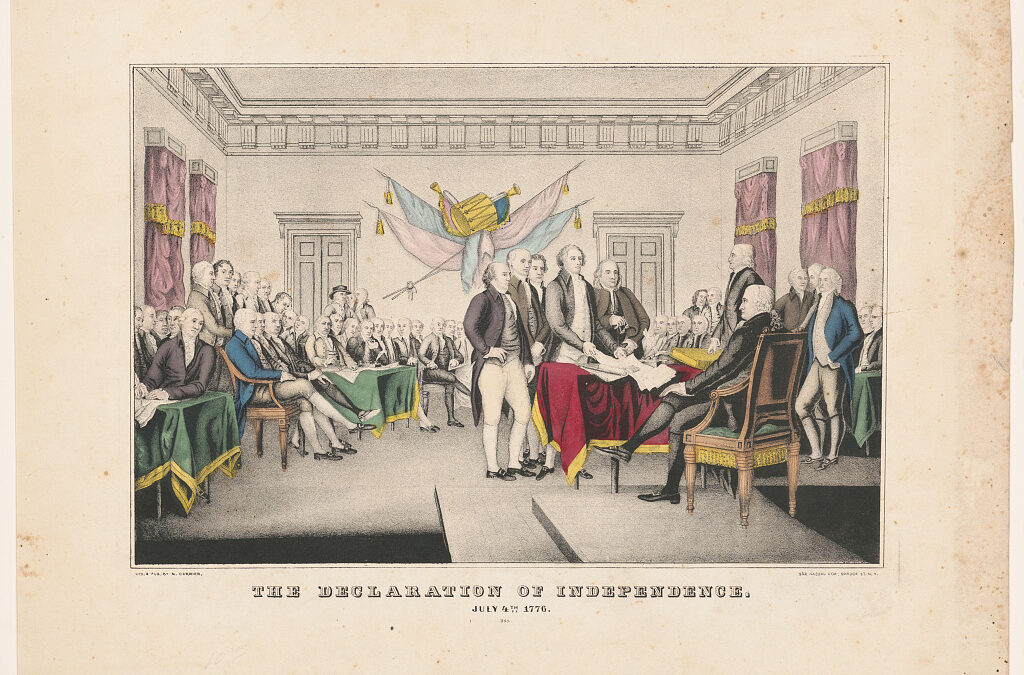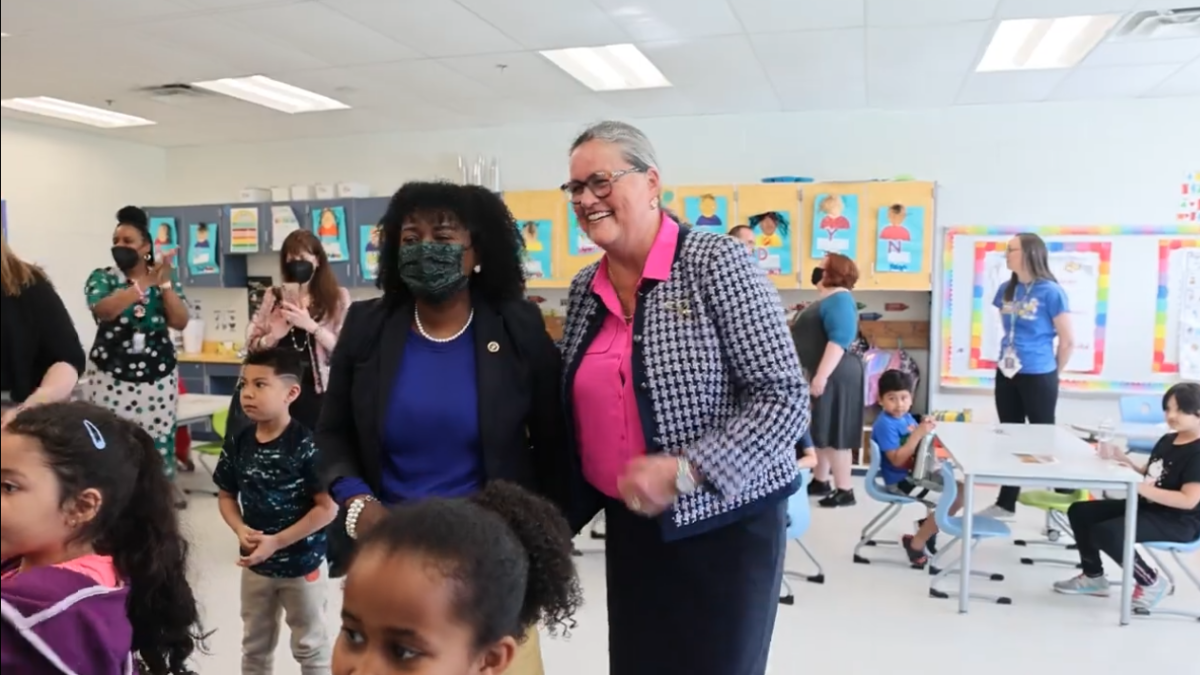
I currently teach math at a middle school. I teach in the manner that I learned: a traditional form that has served many people well over the years. The traditional mode of teaching has been under fire for two to three decades as having “failed thousands of students.” Certain practices such as tracking students—particularly minorities—are considered part and parcel to traditional modes of teaching.
Tracking typically means placing students into classes at their ability level, rather than their grade or age level. This has come under criticism and is often derided for “reinforcing inequality.” While such practices are no longer implemented as they once were, they exist in other forms as unintended consequences of those who seek to protect students from the ravages of the much derided traditional modes of teaching.
Over the past several decades students have been so “protected” with the goal of eliminating the so-called “achievement gap.” The result is that the achievement gap is being eliminated by eliminating achievement.
Meet My Classmate Raymond
To put things in an historical perspective, I offer a brief description of my experience when I began high school. I attended Mumford High School in Detroit, from the fall of 1964 through June of 1967, the end of a period known to some as the golden age of education, and to others as an utter failure. For the record I am in the former camp, a product of an era which in my opinion well-prepared me to major in mathematics.
I was in tenth grade, taking Algebra 2. In the study hall period that followed my algebra class I worked the 20 or so homework problems at a double desk I shared with Raymond, a black student. He would watch me do the day’s homework problems, which I worked with the ease and alacrity of an expert pinball player.
While I worked, he would ask questions about what I was doing, and I would explain as best I could, after which he would always say “Pretty good, pretty good”—which served both as an expression of appreciation and a signal that he didn’t really know much about algebra but wanted to find out more. He said he had taken a class in it.
In one assignment, the page of my book was open to a diagram entitled “Four ways to express a function.” The first was a box with a statement: “To find average blood pressure, add 10 to your age and divide by 2.” The second was an equation P = (A+10)/2. The third was a table of values, and the last was a graph.
Raymond asked me why you needed different ways to say what was in the box. I wasn’t entirely sure myself, but explained that the different ways enabled you to see the how things like blood pressure changed with respect to age. Sometimes a graph was better than a table to see this; sometimes it wasn’t. It was not a very good explanation, I realized, and over the years I would come back to that question—and Raymond’s curiosity about it—as I would analyze equations, graphs, and tables of values.
Over the study hall presided a high school counselor whose office was in the corner of the great room. On the day when we were to sign up for next semester’s courses, she called out the names of the students in her custody. Raymond went in for his appointment. During the discussion the counselor, not given to sensitivity nor controlling the volume of her speech, suddenly blared out in unrelenting anger for all the study hall to hear: “You want to take algebra 2? You didn’t finish Algebra 1, and you got a D in the part you did finish! You will take General Arithmetic, young man!”
Raymond walked back and took his seat next to me. I said I was sorry about what happened, but he didn’t look in my direction. I was 15 and didn’t quite know what to do, so I didn’t do or say anything else to him. He didn’t speak to me for the remainder of the semester, and when I worked my algebra problems he found something else to do.
I have related this story to others over many years. While most are sympathetic with Raymond, others have accused me of exaggerating the situation and eliciting sympathy only because Raymond was African-American. “If Raymond had been white, would anyone care about the story? Was his goal to take algebra unrealistic, but nevertheless the counselor was supposed to nurture that little spark of ‘algebra 2 looks fun’ in order to get Raymond working harder, and that someone let down all the African-Americans by putting them in the lowest math class and not rekindling his spark?”
I don’t know whether his interest in math was based on me making it look easy, or whether he would have made a serious effort to get up to speed. I also don’t know whether his poor performance in the algebra course he took was because of poor teaching, lack of ability, or because he was a victim of neglect who had been passed on and promoted to the next grade as many students had been.
I doubt his counselor knew, either. Whether his counselor would have reacted differently had Raymond been white is also something I don’t know. What I do know is that in the name of equity for all, students no longer have to be a minority to be put on a track that leaves them behind or to be told they may not have cognitive ability.
Mischaracterizing Traditional Teaching
I have written previously and extensively about math as it was “traditionally taught” because I feel strongly about it and it is what I know best. Two of the main criticisms about traditional math, which have also been levied against education in general for the era, are that 1) it relied on memorization and rote problem solving, and 2) it failed thousands of students.
This last criticism refers to the low numbers of students taking algebra and other math classes in the 1950s and ’60s and is taken as evidence that the techniques of traditional math—drills, memorization, and word problems not necessarily related to the “real world”—worked only for bright students who learned math no matter how it was taught. Another and frequently unmentioned side to this argument, however, is that the low numbers of students who took algebra and other math classes during this period was because of the tracking practices in force.
The history of tracking students in public education goes back to the early part of the 1900s. By the ’20s and ’30s, curricula in high schools had evolved into four different types: college-preparatory, vocational (e.g., plumbing, metal work, electrical, auto), trade-oriented (e.g., accounting, secretarial), and general. Students were tracked into the various curricula based on IQ and other standardized test scores as well as other criteria. The educational system in the U.S. pitted many groups against each other, so skin color was not the only determinant. Children from farms rather than from cities, and children of immigrants, for example, were often assumed to be inferior in cognitive ability and treated accordingly.
During the ’60s and ’70s, the progressive education establishment’s goal was to restore equity to students and to eliminate the tracking that created splits between social class and race. The end product, however, meant merging the general track with college prep, resulting in college prep becoming increasingly student-centered. Classes such as Film Making and Cooking for Singles were offered, and requirements for English and history courses were reduced if not dropped. Social class and race was no longer a barrier for such classes, as evidenced by the increasing numbers of white students taking them.
The Elimination of Ability Grouping
By the early ’80s, the “Back to Basics” movement formed to turn back the educational fads and extremes of the late ’60s and the ’70s and reinstitute traditional subjects and curricula. Progressives’ underlying ideas did not go away, however, and the watchword continued to be equal education for all. While such a goal is laudable, the attempt to bring equity to education by eliminating tracking had the unintended consequence of replacing it with another form of inequity: the elimination of grouping of students according to ability.
The elimination of ability grouping occurs mostly in the lower grades but also extends to early courses in high school. “Full inclusion” is now so commonplace that theories have emerged to justify its practice and to address the problems it brings. “Learning styles” and “multiple intelligences” are now commonplace terms taught in schools of education, along with the technique known as “differentiated instruction,” to address how to teach students with diverse backgrounds and ability in the subject matter. Teachers are expected to differentiate instruction for each student, and to minimize whole-group instruction. To do this, the teacher gives a “mini-lesson” that lasts 10 to 15 minutes. Then students are told to work together in small groups.
The limitations of differentiated instruction work hand-in-hand with other aspects of the educational beliefs that shun “traditional” modes of instruction. (The current trends are described in accurate detail in “Raising a Left-Brain Child in a Right Brain World” by Katherine Beals.) It is not unusual to hear parents concerned over art-based projects in English classes that call for book reports in the form of a book jacket or poster—in which the artistic merits of the poster or book jacket may count as much as the actual composition.
Exercises in grammar are almost extinct. Essays now are “student-centered,” meaning students write about how they feel about certain events that occur in a story, relating it to themselves. This extends to history classes as well. They may be asked how Hester Prynne or George Washington on the eve of battle would write about themselves on Facebook. Objective analysis, along with grammatical drill, sentence and paragraph structure, and other tenets of a basic education, are considered passé and not a fit for the current catchphrase, “twenty-first-century education.”
Brighter students are seated with students of lower ability in the belief that the brighter students will teach the slower ones. Frequently this occurs, although the inconvenient truth that the brighter students are often obtaining their knowledge via parents, tutors, or learning centers is rarely if ever acknowledged. Another inconvenient truth is that in lower-income communities, there are unlikely to be students who have obtained their knowledge through outside sources; they are entirely dependent on their schools.
Exchanging One Inequity for Another
Students forced to endure this form of education do not progress as rapidly or master the essentials necessary to be successful in high school math courses. An exception to this trend, however, is found in “gifted and talented” courses. In general, such programs consist of a traditional approach for math and other subjects. Thus, students who qualify for these courses are exempted from the one-size-fits-all, student-centered classes.
Students forced to endure this form of education do not progress as rapidly or master the essentials necessary to be successful in high school math courses.
In either case, students entering high school have been unintentionally split into groups of students: those who qualify for honors classes and those who will not. Depending on the high school, the non-honors courses may be watered down versions often by necessity. In some schools these students are passed on through the system; in others they receive failing grades. Through circumstances beyond their control, students may end up “tracked” in sub-standard courses and will be ill-prepared to take math courses in college, thus shutting out possibilities of a career in the sciences or engineering.
A study by William Schmidt of Michigan State University observes such differences in learning opportunities and concludes they are a function of the education system structure. Thus, there are differences in content depending on the school district, and there is a fundamental relationship between content coverage and achievement.
Schmidt states that with respect to mathematics, if the districts examined in his study were to hold generally for the country, then “any student can be disadvantaged simply due to differences in the rigor of the mathematics taught in the district in which they happen to attend school.” While a variety of factors contribute to disadvantaging students as discussed above, eliminating ability grouping is a big one. Through the efforts and philosophies of otherwise well-meaning individuals, full inclusion and equality for all has served as a form of tracking.
Not Good Enough for Traditional Instruction
Critics of the traditional model of education, particularly math, argue that traditional methods worked only for gifted students (who, it is assumed, will learn what they need to know no matter how it is taught). The corollary to such thinking is that non-gifted students are not good enough for the traditional method.
The move to homogenize skill levels in the classrooms has been entrenched now for several decades. It has come to the point that students who have been forced through circumstances into non-honors tracks, and judged to not be able to handle the traditional mode of education, are thus “protected” from it. Thus they are not presented with the choice to work hard—and many happily comply in a system that caters to it.
This brings us back to Raymond and whether reaction to the story I described would have been different had he been white. That is a key problem. Many students—not just minorities—are put on the protection-from-learning track. Many such students then fulfill the low expectations that have been conferred upon them.
The education establishment’s view of this situation is a shrug and the response that “Maybe your child just isn’t good in math”—despite continuing to justify their weak inquiry-based and student-centered approaches. Their response carries to subjects beyond math and is extended to “Maybe your child isn’t college material.” While a “college for all” goal is indeed unrealistic, the view that so many students somehow are lacking in cognitive ability raises serious questions. Simply put, you no longer have to be a minority to be told you may not have cognitive ability.
There are still Raymonds in the educational system, and in an ironic application of equity their ranks include all races and colors. There is now an inbred resistance against ability grouping and using explicit instruction (more-so in lower grades than in middle or high school). That such approaches may result in higher achievement, with more students qualifying for gifted and honors programs, is something that the education establishment has come to deny by default.
What they have chosen instead is an inherent and insidious tracking system that leaves many students behind. And many of those left behind despise education and the people who managed to achieve what they could not.









